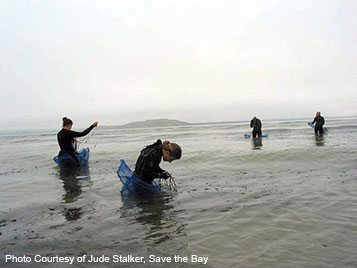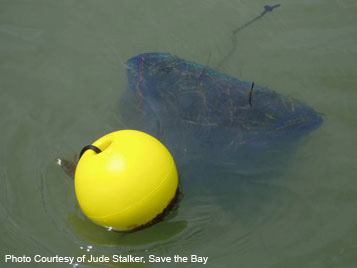The BuDS method was developed by Chris Pickerell in Sag Harbor Cove, NY.
One year after Pickerell deployed the seed bags, the success of his technique was measured by counting the number of shoots in the area. This restoration effort was reasonably successful compared to the success rate of other techniques, and was then used in other locations (Pickerell et al. 2005).
Dr. Robert Orth attemped a modification of this method in the VA coastal bays at the same time as he used the seed broadcasting technique. The BuDs technique produced a small seagrass meadow; however, in this area seed broadcasting had a larger success rate: more seagrass survival and better coverage.
In contrast, Dr. Katharyn Boyer used both the seed broadcasting technique and the BuDs system at the same time in San Francisco Bay. In this case, the BuDs technique was dramatically more successful. After this trial, a large oil spill occurred in San Francisco Bay impacting seagrass meadows, and based on her research, the BuDs technique will be used to restore the meadows impacted by this spill.
This example highlights an important issue with seagrass restoration -- that different techniques work better at different sites depending on the local conditions. Very often, considerable research and experimentation testing the techniques must be done before large-scale restoration can be successful in a particular area.
For more info, please check out:
Pickerell, C.H., S. Schott, S.Wyllie-Echeverria (2005)
Buoy-deployed seeding: Demonstration of a new eelgrass (Zostera marina L.) planting method, Ecological Engineering, Volume 25, Issue 2, 20 August 2005, Pages 127-136

